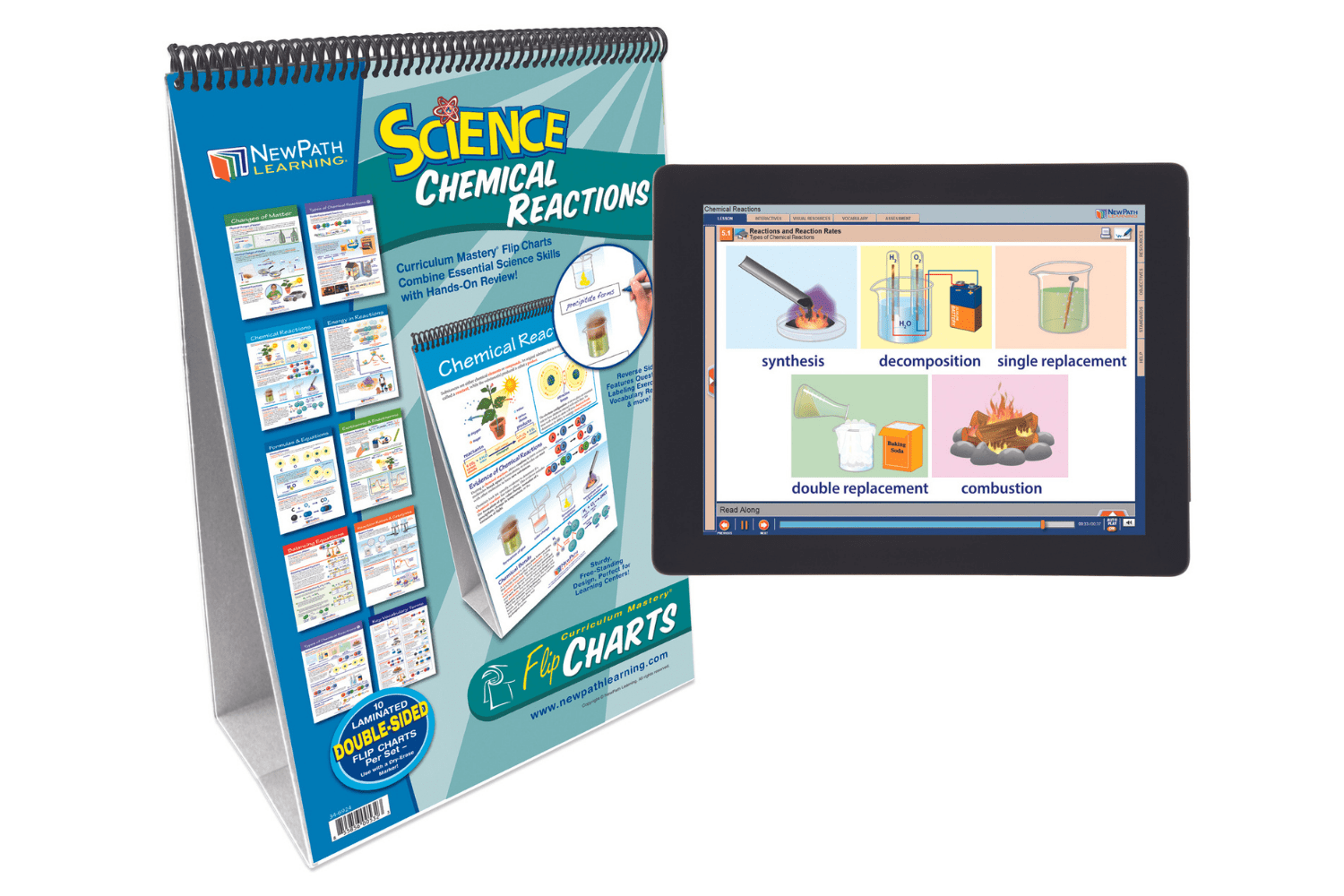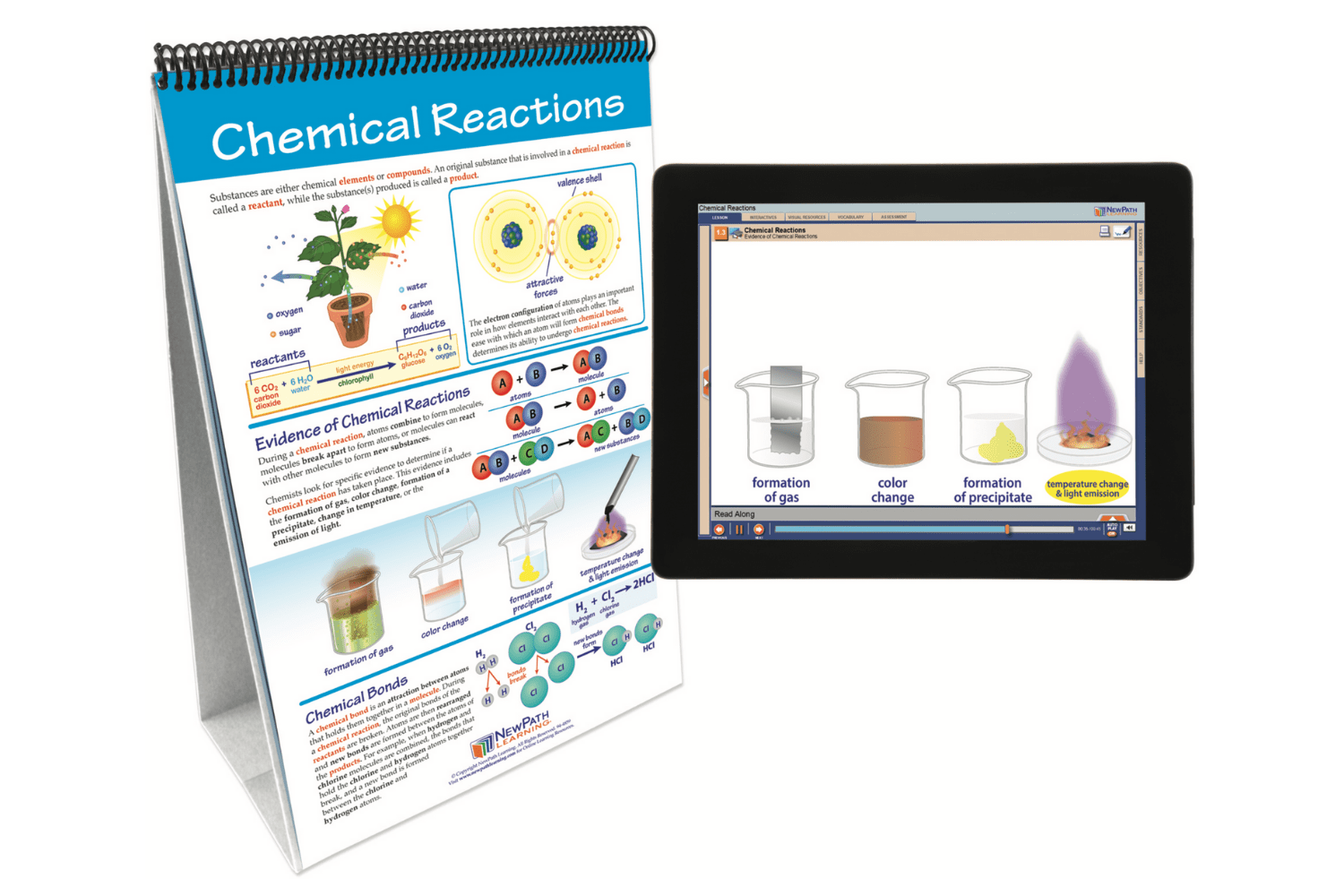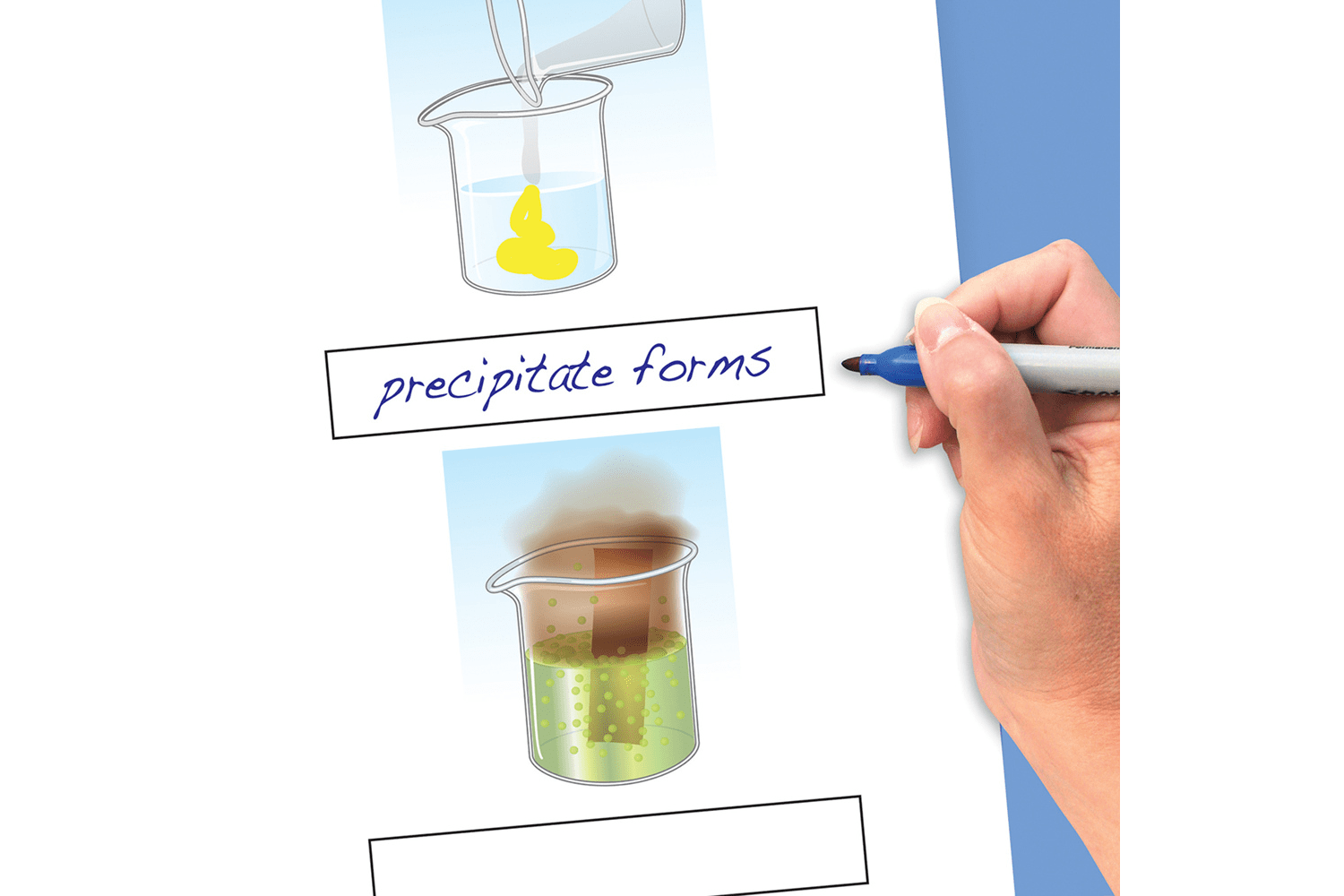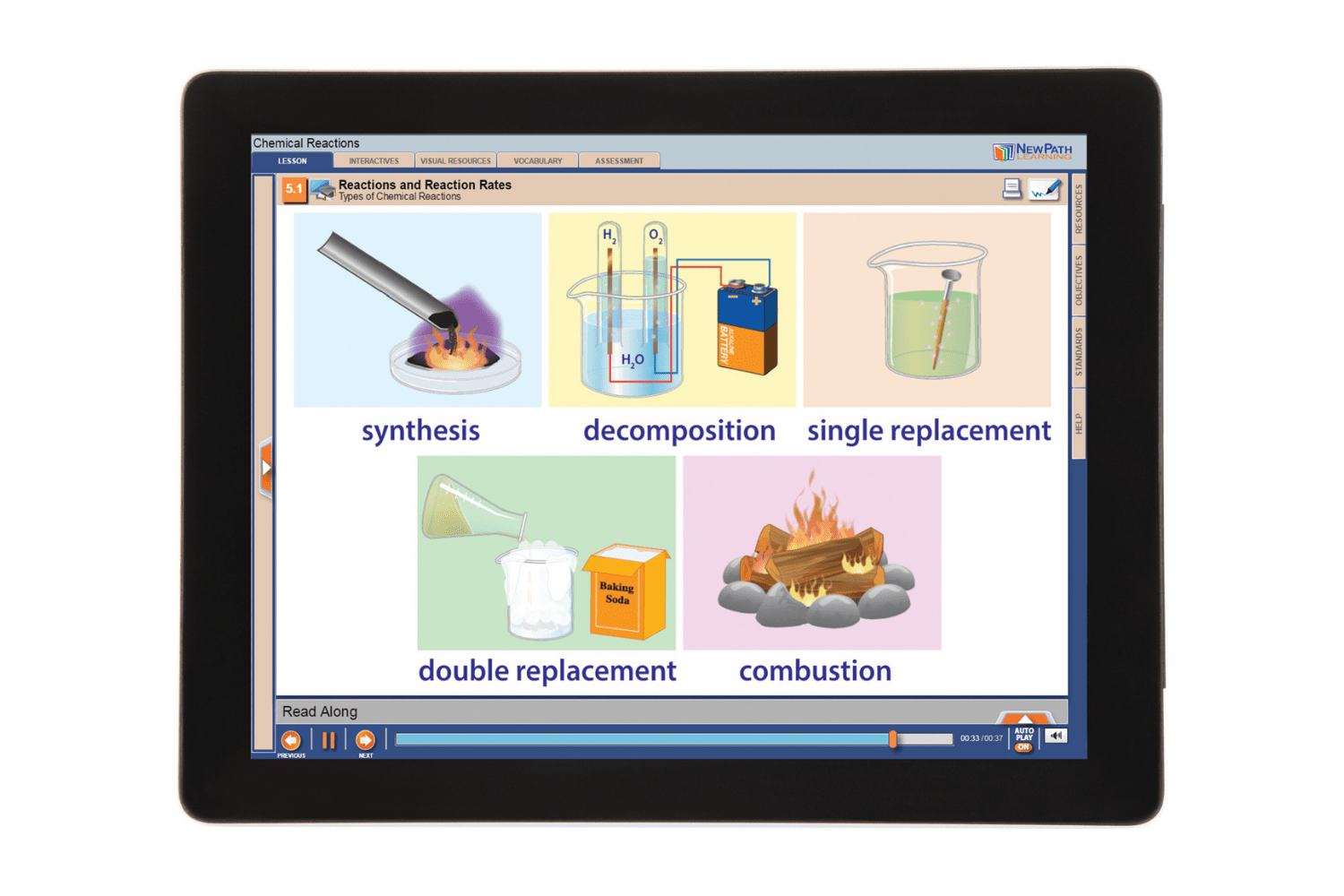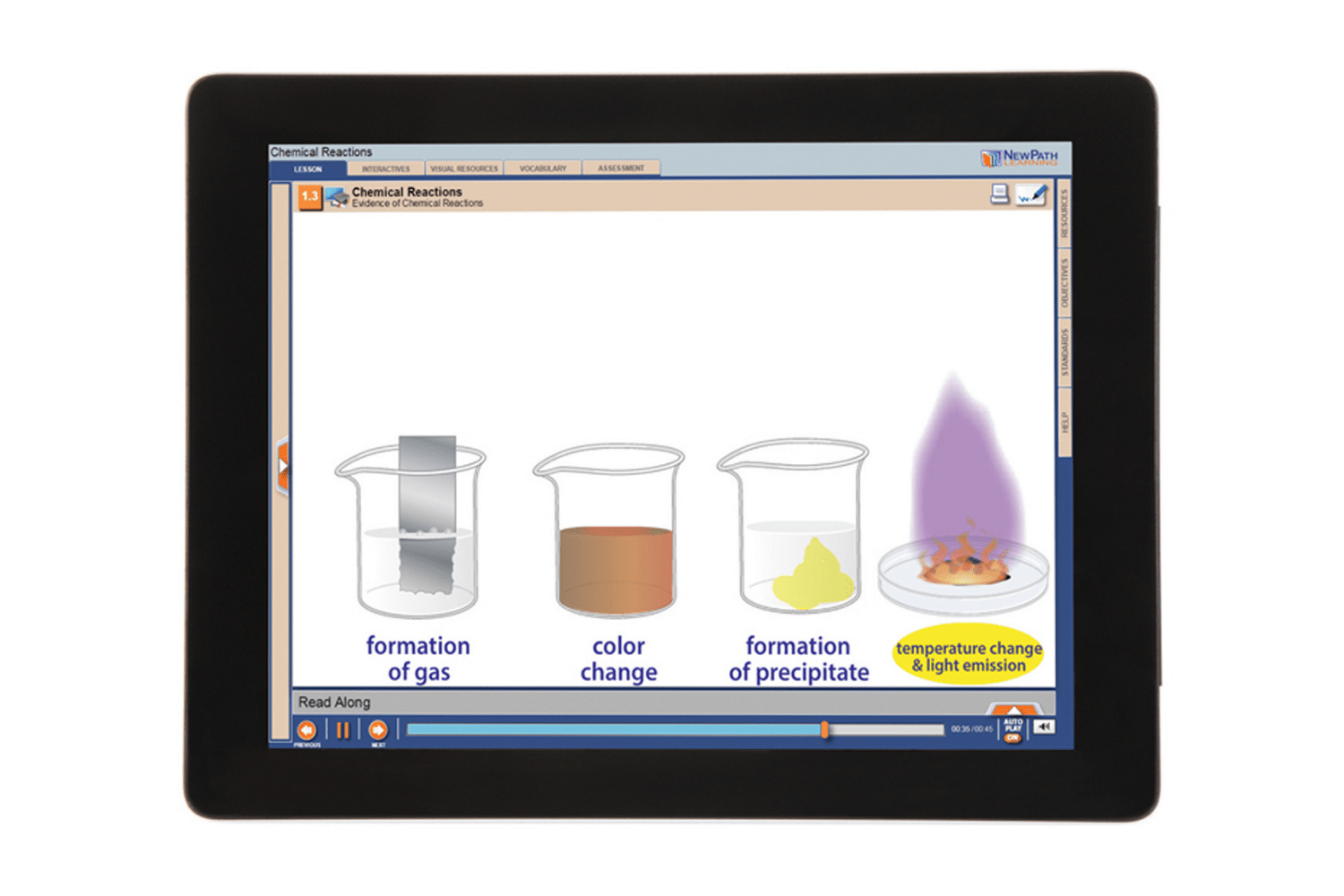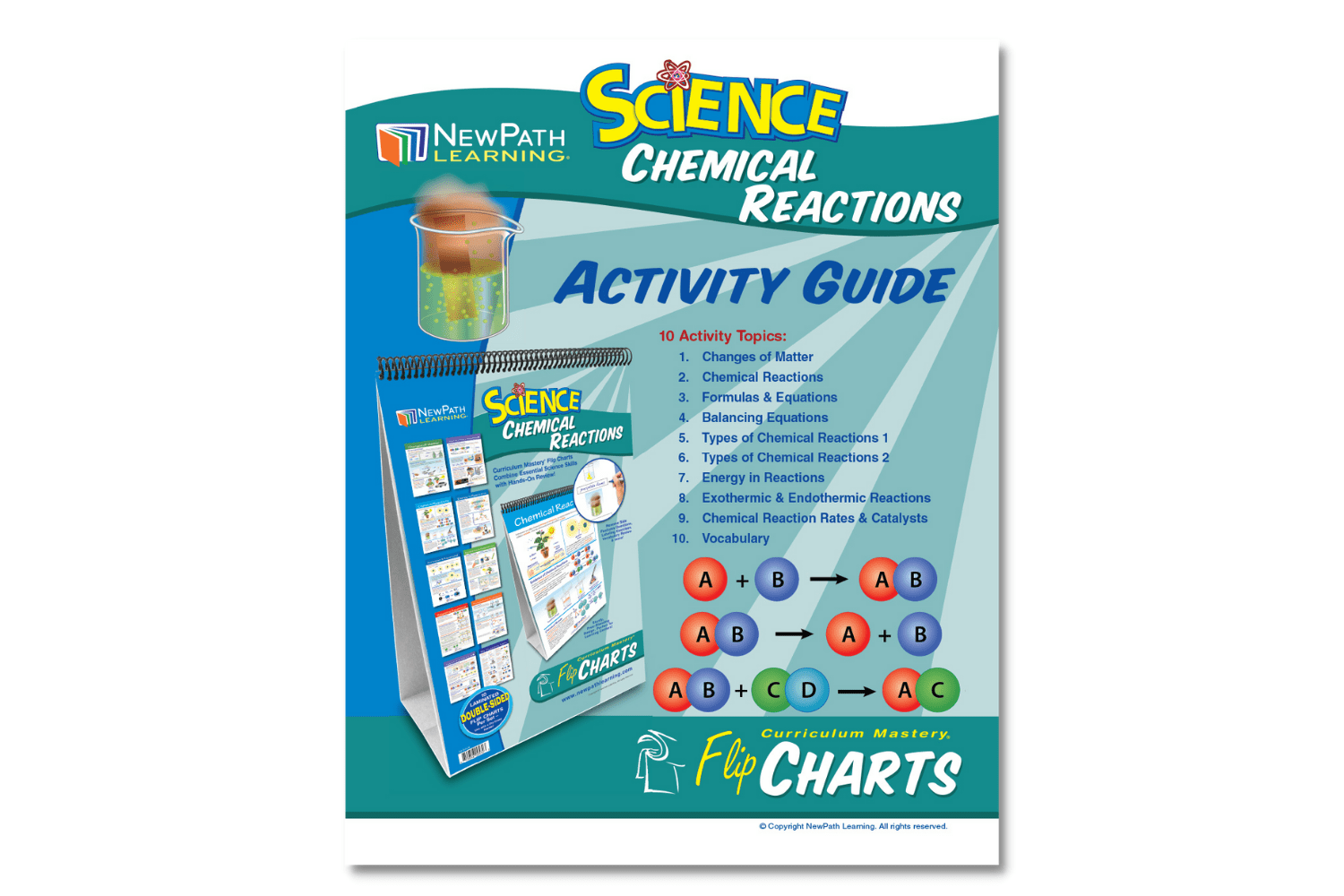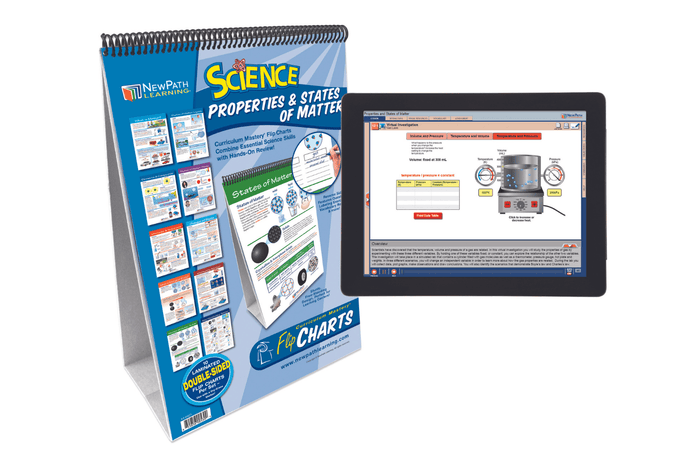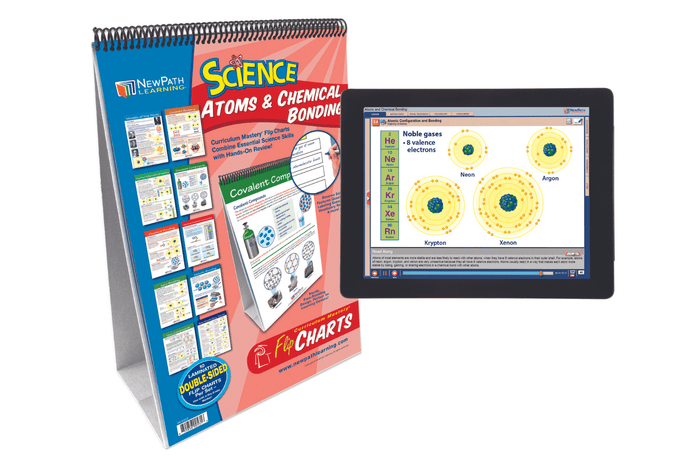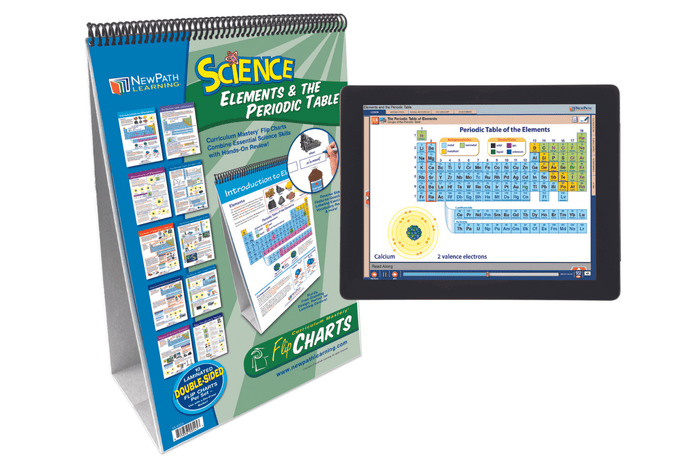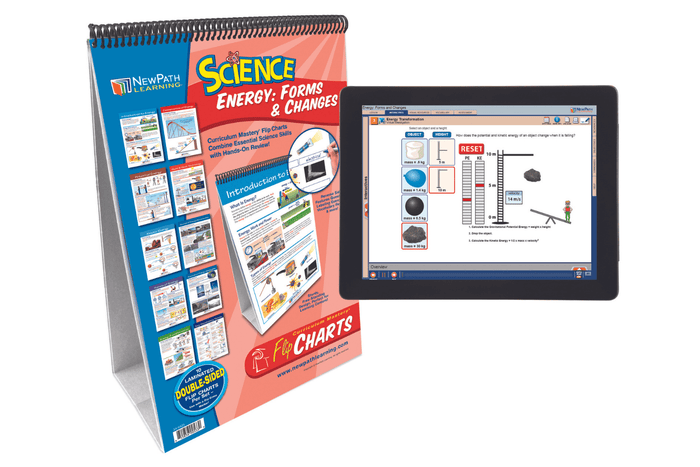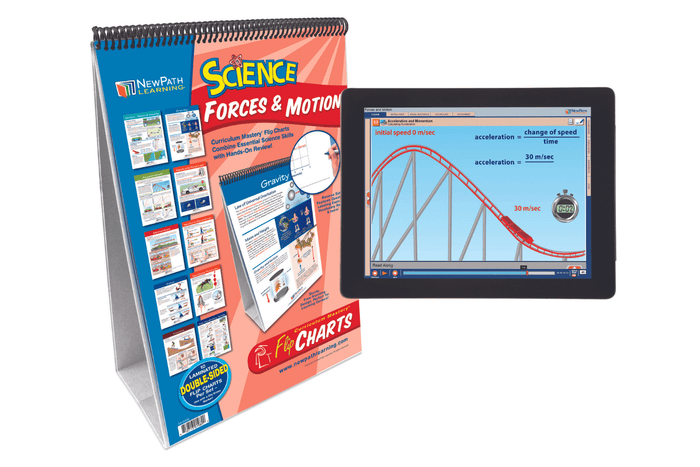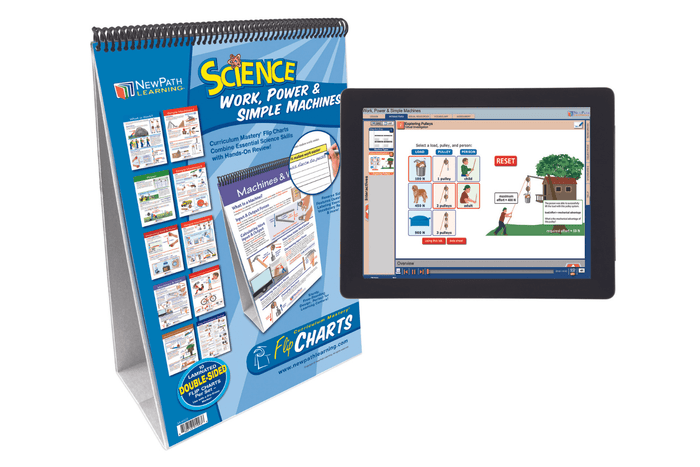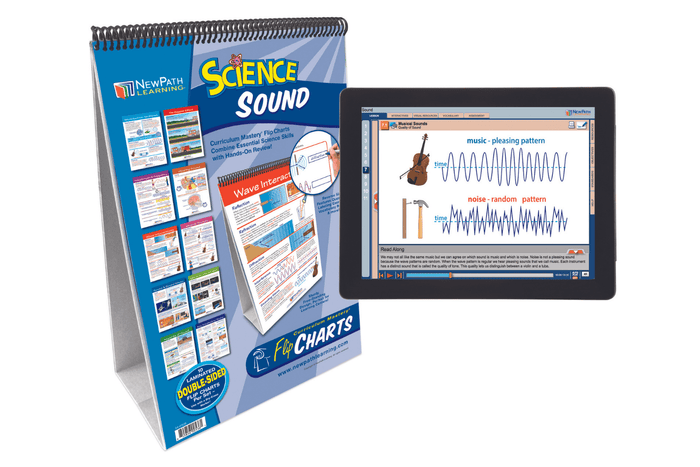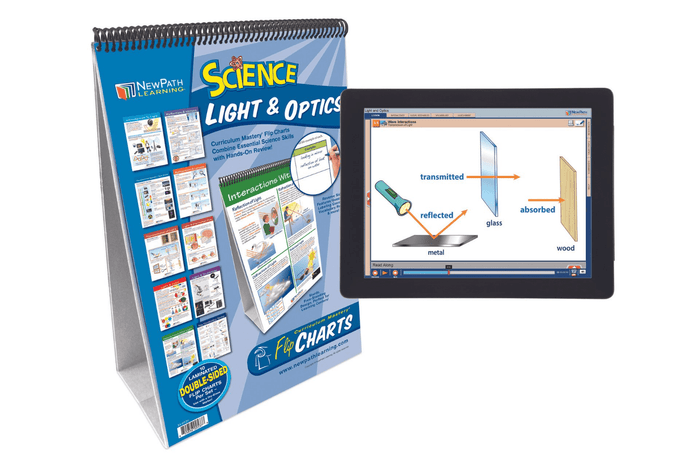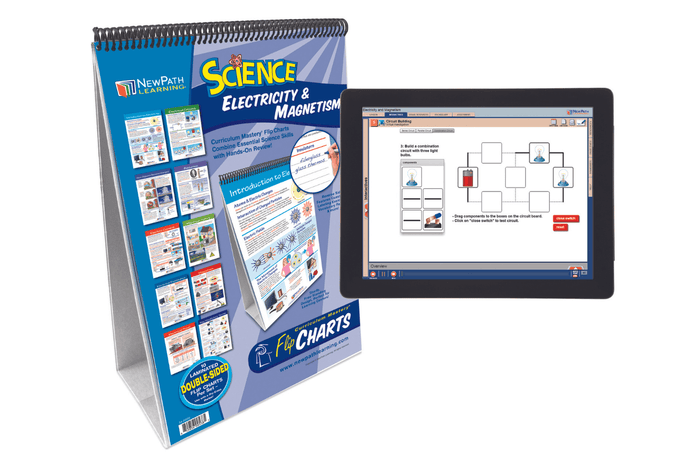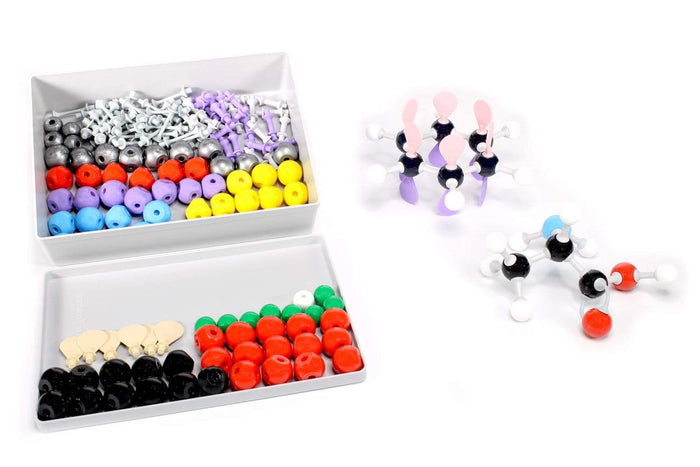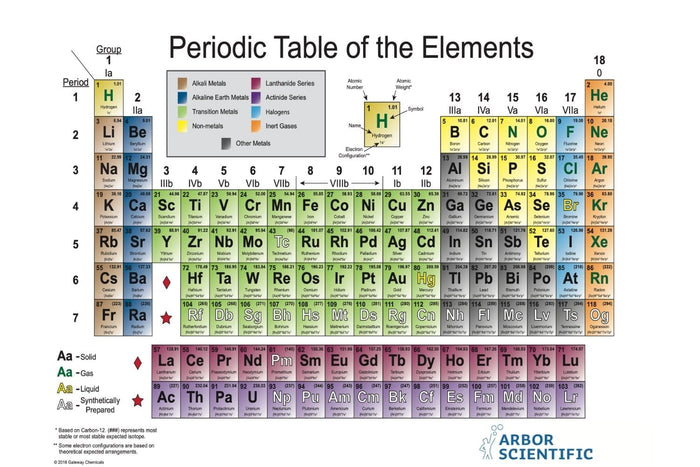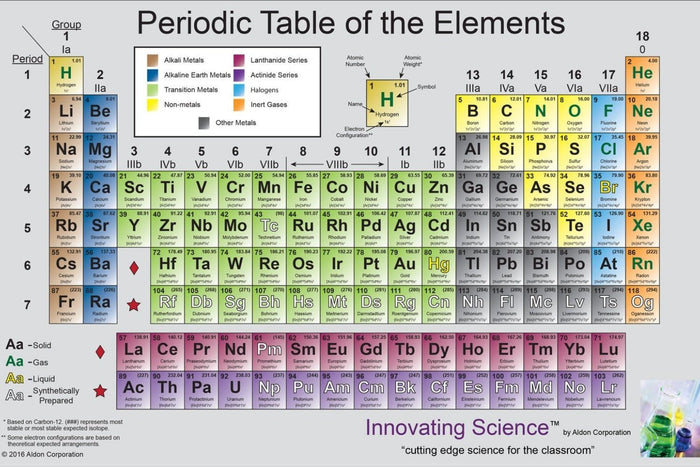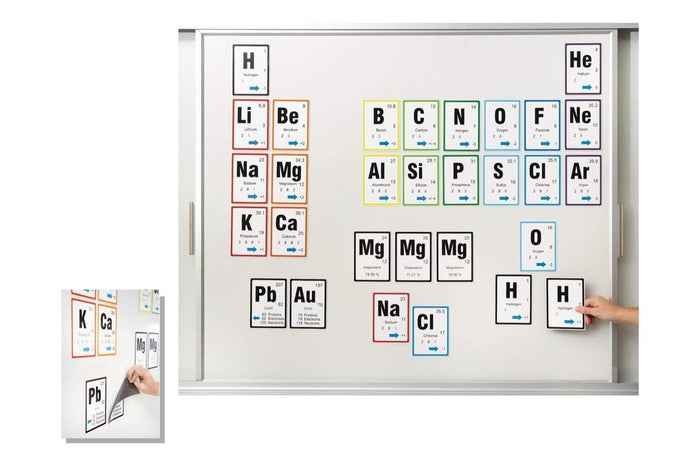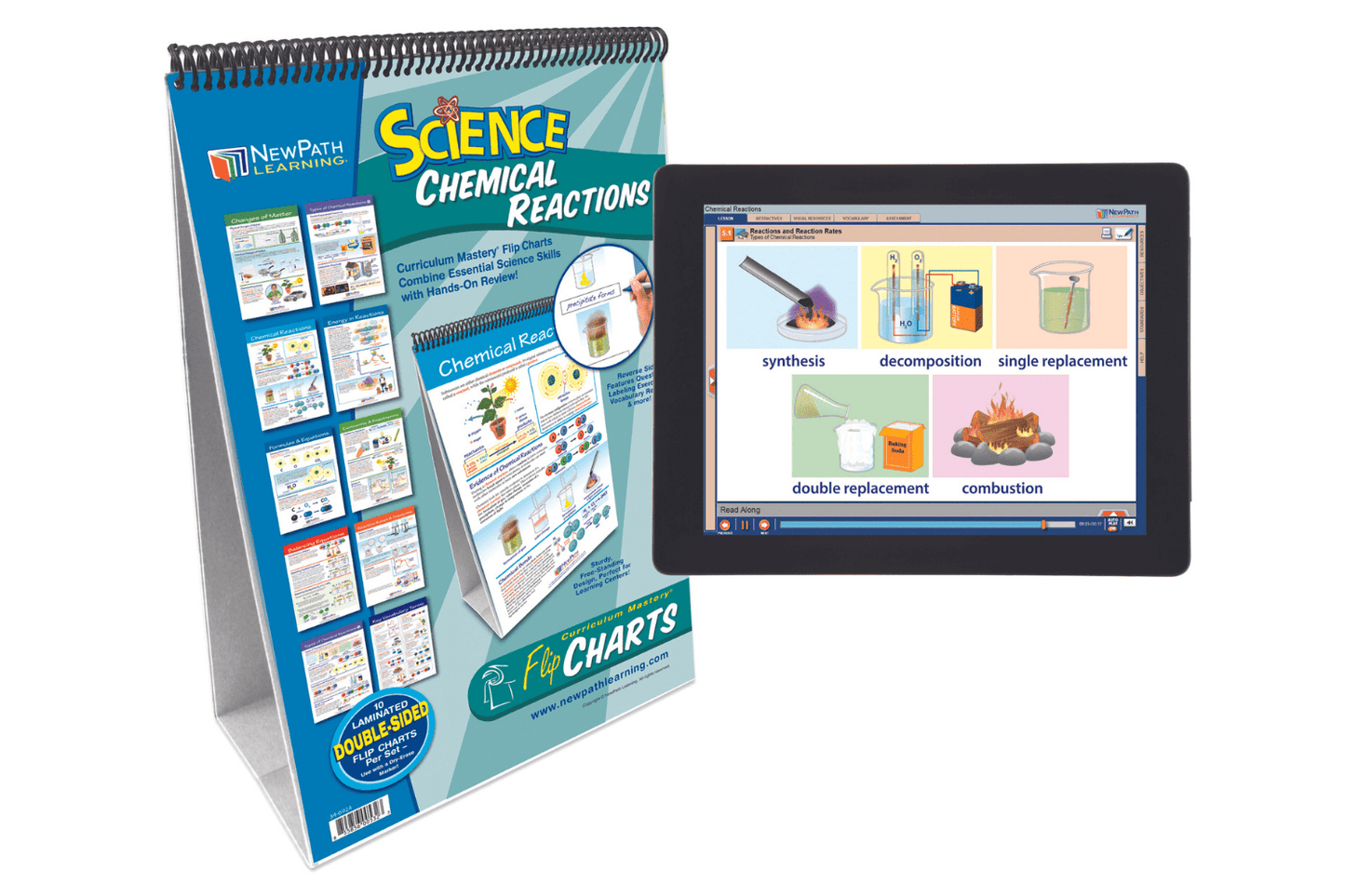
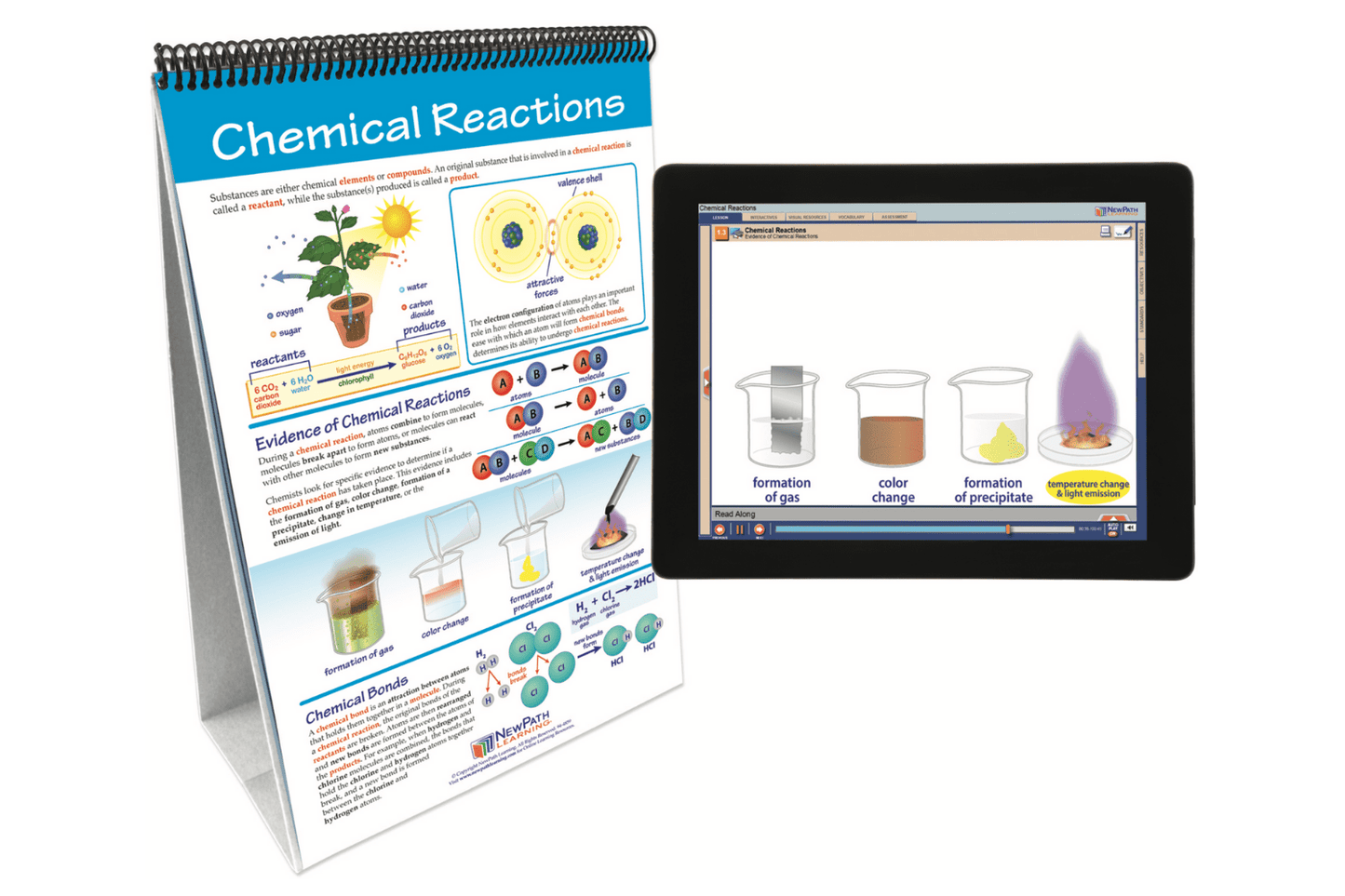
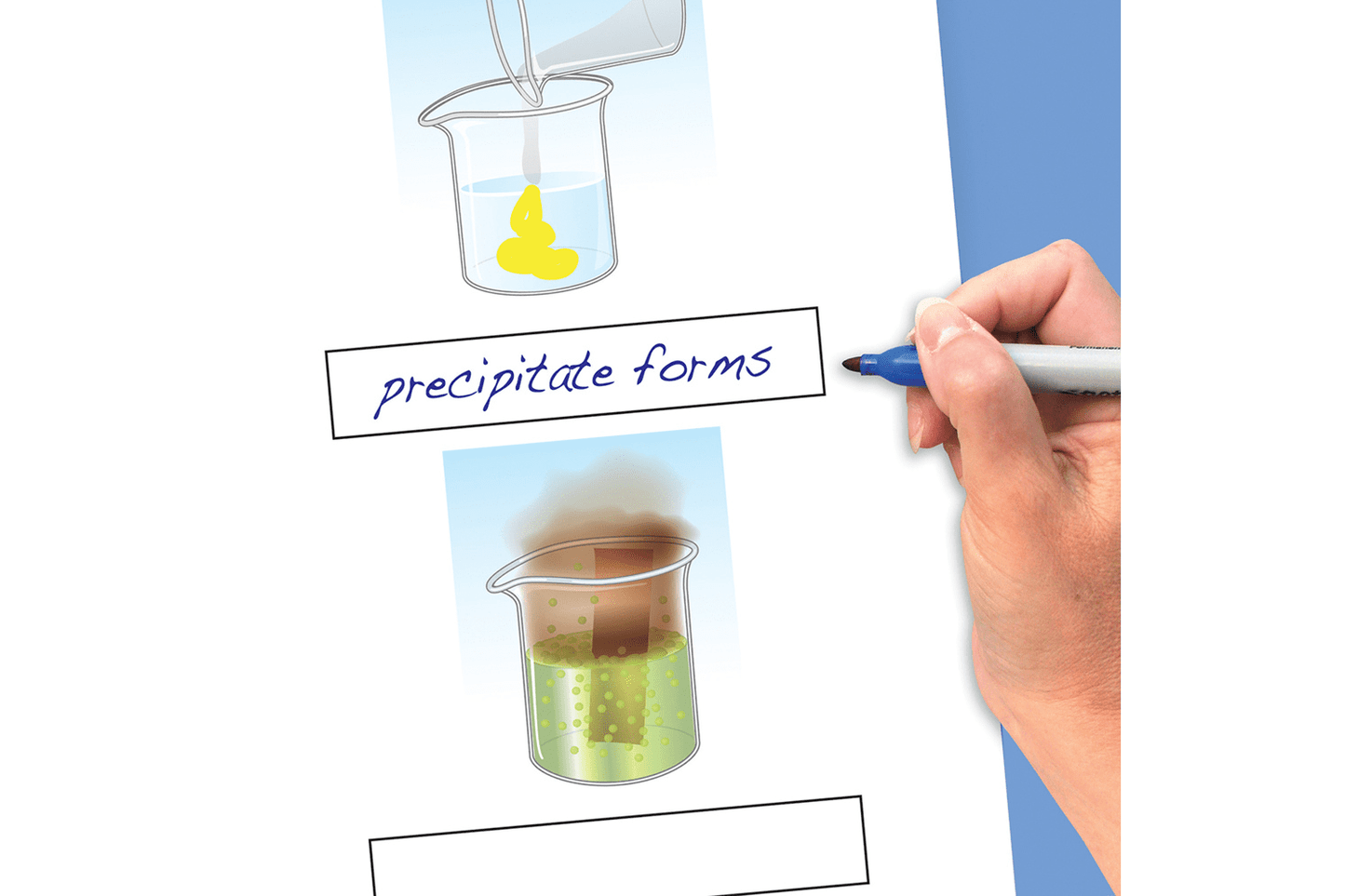
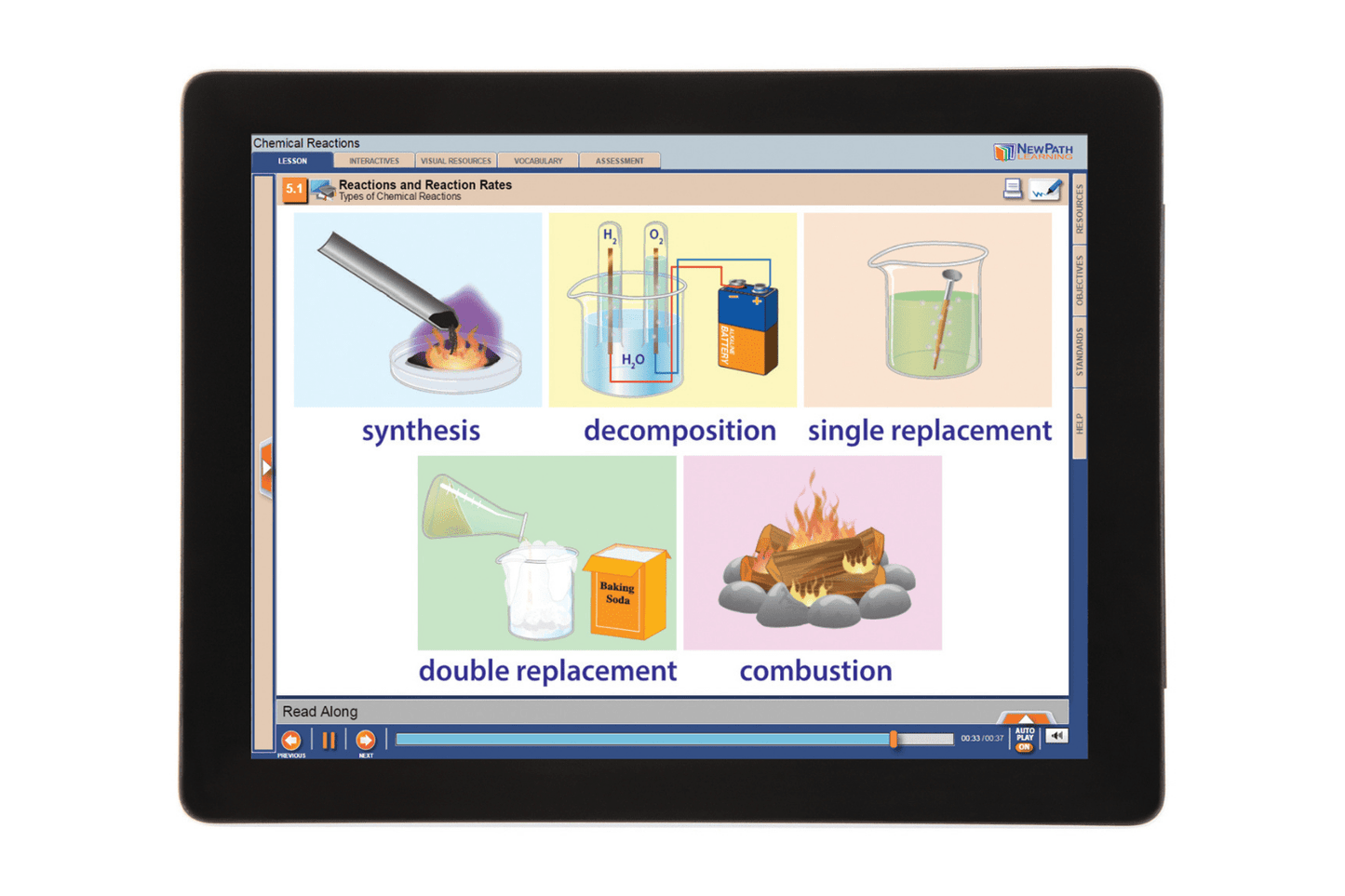
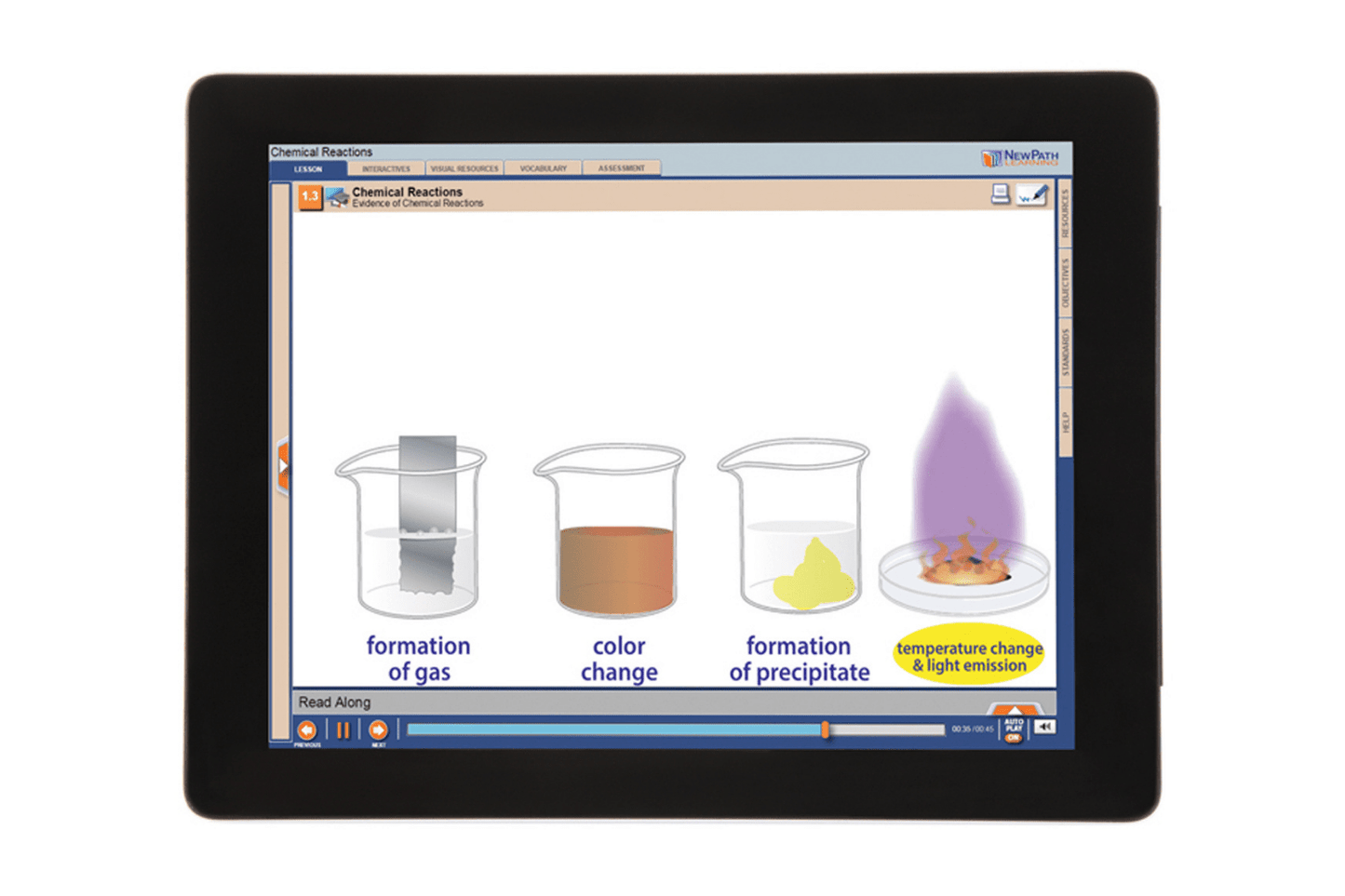
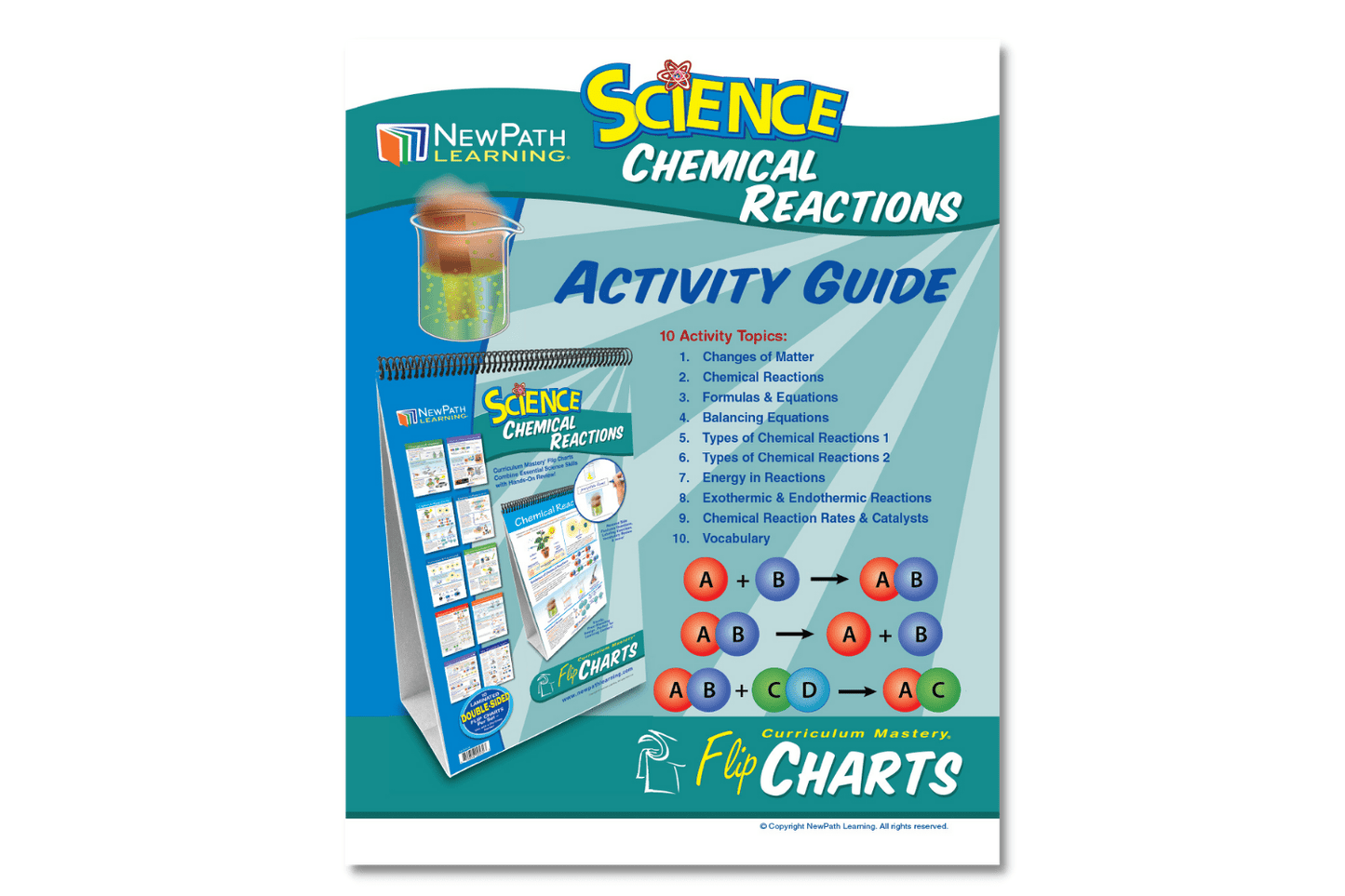
Other Options
| Order Qty |
Price | Qty for Discount |
Discount Price |
Total Savings |
||||
|---|---|---|---|---|---|---|---|---|
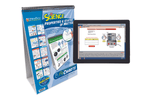
|
NewPath Learning Properties & States of Matter Flip Chart Set With Online Multimedia Lesson Item # 21-2030-01 |
|
|
$34.95 | ||||
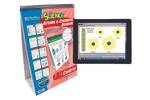
|
NewPath Learning Atoms & Chemical Bonding Flip Chart Set With Online Multimedia Lesson Item # 21-2030-08 |
|
|
$34.95 | ||||
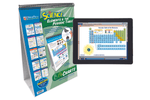
|
NewPath Learning Elements & the Periodic Table Flip Chart Set With Online Multimedia Lesson Item # 21-2030-06 |
|
|
$34.95 | ||||
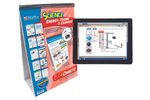
|
NewPath Learning Energy: Forms & Changes Flip Chart Set With Online Multimedia Lesson Item # 21-2030-02 |
|
|
$34.95 | ||||
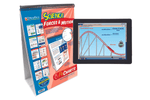
|
NewPath Learning Forces & Motion Flip Chart Set With Online Multimedia Lesson Item # 21-2030-03 |
|
|
$34.95 | ||||
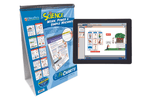
|
NewPath Learning Work, Power & Simple Machines Flip Chart Set With Online Multimedia Lesson Item # 21-2030-05 |
|
|
$34.95 | ||||
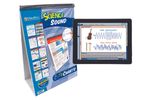
|
NewPath Learning Sound Flip Chart Set With Online Multimedia Lesson Item # 21-2030-04 |
|
|
$34.95 | ||||
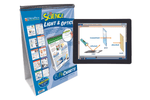
|
NewPath Learning Light & Optics Flip Chart Set With Online Multimedia Lesson Item # 21-2030-09 |
|
|
$34.95 | ||||
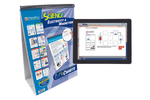
|
NewPath Learning Electricity & Magnetism Flip Chart Set With Online Multimedia Lesson Item # 21-2030-10 |
|
|
$34.95 | ||||
Additional Details
Make Science Come Alive with this Flip Chart Set, along with a Standards Based Online Multimedia Lesson!
This NewPath Learning Chemical Reactions Flip Chart Set With Online Multimedia Lesson helps students turn this complex topic into a visually captivating and engaging activity. Guided along with an included 1-year bonus Online Multimedia Lesson, students can enjoy learning through:
- Animated, Narrated Tutorials
- Interactive Exercises & Activities
- Virtual Lab Investigations
- Illustrated, Narrated Glossary
- Visual Resource Library
- Inquiry-Based Student Activity Guide
All lessons are developed under sponsorship of the National Institutes of Health (NIH).
The flip chart easel features 10 double-sided and laminated charts that separate one key concept at a time.
- Changes of Matter
- Chemical Reactions
- Formulas & Equations
- Balancing Equations
- Types of Chemical Reactions (1)
- Types of Chemical Reactions (2)
- Energy in Chemical Reactions
- Exothermic & Endothermic Reactions
- Chemical Reaction Rates & Catalysts
- Vocabulary Review
Side 1 of each chart includes a colorful, visual overview of the topic.
Side 2 serves as a "write-on/wipe-off" activity chart featuring questions, labeling exercises, vocabulary review, and more!
An included Teacher's Guide features a master copy of the activities and review questions that can be duplicated and used year after year.
Standards
Middle School (Grades 6, 7, 8) NGSS Correlations
| STRAND | NGSS.MS-PS. | PHYSICAL SCIENCE |
| TITLE | MS-PS1. | Matter and Its Interactions - Students who demonstrate understanding can: |
| PERFORMANCE EXPECTATION / FOUNDATION | MS-PS1.SEP. | Science and Engineering Practices |
| ELEMENT | MS-PS1.SEP.1. | Developing and Using Models - Modeling in 6–8 builds on K–5 and progresses to developing, using and revising models to describe, test, and predict more abstract phenomena and design systems. |
| INDICATOR | MS-PS1.SEP.1.1. | Develop a model to predict and/or describe phenomena. (MS-PS1-1), (MS-PS1-4) |
| INDICATOR | MS-PS1.SEP.1.2. | Develop a model to describe unobservable mechanisms. (MS-PS1-5) |
| STRAND | NGSS.MS-PS. | PHYSICAL SCIENCE |
| TITLE | MS-PS1. | Matter and Its Interactions - Students who demonstrate understanding can: |
| PERFORMANCE EXPECTATION / FOUNDATION | MS-PS1.CC. | Crosscutting Concepts |
| ELEMENT | MS-PS1.CC.1. | Patterns |
| INDICATOR | MS-PS1.CC.1.1. | Macroscopic patterns are related to the nature of microscopic and atomic- level structure. (MS-PS1-2) |
| STRAND | NGSS.MS-PS. | PHYSICAL SCIENCE |
| TITLE | MS-PS1. | Matter and Its Interactions - Students who demonstrate understanding can: |
| PERFORMANCE EXPECTATION / FOUNDATION | MS-PS1.CC. | Crosscutting Concepts |
| ELEMENT | MS-PS1.CC.3. | Scale, Proportion, and Quantity |
| INDICATOR | MS-PS1.CC.3.1. | Time, space, and energy phenomena can be observed at various scales using models to study systems that are too large or too small. (MS-PS1- 1) |
High School (Grades 9) NGSS Correlations
| STRAND | NGSS.HS-PS. | PHYSICAL SCIENCE |
| TITLE | HS-PS1. | Matter and Its Interactions - Students who demonstrate understanding can: |
| PERFORMANCE EXPECTATION / FOUNDATION | HS-PS1-1. | Use the periodic table as a model to predict the relative properties of elements based on the patterns of electrons in the outermost energy level of atoms. |
| STRAND | NGSS.HS-PS. | PHYSICAL SCIENCE |
| TITLE | HS-PS1. | Matter and Its Interactions - Students who demonstrate understanding can: |
| PERFORMANCE EXPECTATION / FOUNDATION | HS-PS1.SEP . | Science and Engineering Practices |
| ELEMENT | HS-PS1.SEP .1. | Developing and Using Models - Modeling in 9–12 builds on K–8 and progresses to using, synthesizing, and developing models to predict and show relationships among variables between systems and their components in the natural and designed worlds. |
| INDICATOR | HS-PS1.SEP .1.1. | Develop a model based on evidence to illustrate the relationships between systems or between components of a system. (HS-PS1-4), (HS- PS1-8) |
| INDICATOR | HS-PS1.SEP .1.2. | Use a model to predict the relationships between systems or between components of a system. (HS-PS1-1) |
| STRAND | NGSS.HS-PS. | PHYSICAL SCIENCE |
| TITLE | HS-PS1. | Matter and Its Interactions - Students who demonstrate understanding can: |
| PERFORMANCE EXPECTATION / FOUNDATION | HS-PS1.DCI. | Disciplinary Core Ideas |
| ELEMENT | PS1.A: | Structure and Properties of Matter |
| INDICATOR | PS1.A:1. | Each atom has a charged substructure consisting of a nucleus, which is made of protons and neutrons, surrounded by electrons. (HS-PS1-1) |
| INDICATOR | PS1.A:2. | The periodic table orders elements horizontally by the number of protons in the atom’s nucleus and places those with similar chemical properties in columns. The repeating patterns of this table reflect patterns of outer electron states. (HS-PS1-1), (HS-PS1-2) |
| INDICATOR | PS1.A:3. | The structure and interactions of matter at the bulk scale are determined by electrical forces within and between atoms. (HS-PS1-3), (secondary to HS-PS2-6) |
| STRAND | NGSS.HS-PS. | PHYSICAL SCIENCE |
| TITLE | HS-PS1. | Matter and Its Interactions - Students who demonstrate understanding can: |
| PERFORMANCE EXPECTATION / FOUNDATION | HS-PS1.CC. | Crosscutting Concepts |
| ELEMENT | HS-PS1.CC.1. | Patterns |
| INDICATOR | HS-PS1.CC.1.1. | Different patterns may be observed at each of the scales at which a system is studied and can provide evidence for causality in explanations of phenomena. (HS-PS1-1), (HS-PS1-2), (HS-PS-3), (HS-PS1-5) |
| STRAND | NGSS.HS-PS. | PHYSICAL SCIENCE |
| TITLE | HS-PS2. | Motion and Stability: Forces and Interactions - Students who demonstrate understanding can: |
| PERFORMANCE EXPECTATION / FOUNDATION | HS-PS2.DCI. | Disciplinary Core Ideas |
| ELEMENT | PS2.B: | Types of Interactions |
| INDICATOR | PS2.B:3. | Attraction and repulsion between electric charges at the atomic scale explain the structure, properties, and transformations of matter, as well as the contact forces between material objects. (HS-PS2-6), (secondary to HS-PS1-1), (secondary to HS-PS1-3) |
Accessories
| Order Qty | Price | Qty for Discount | Discount Price | Total Savings | ||||
|---|---|---|---|---|---|---|---|---|
|
|
Student Molecular Modeling Kit Item # C1-3160 |
|
|
$29.95 | 6 | $28.00 | ||
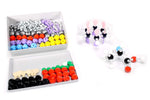
|
Teacher Molecular Modeling Kit Item # C1-3165 |
|
|
$63.00 | 10 | $58.50 | ||
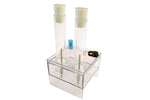
|
Deluxe Electrolysis Apparatus Item # C6-0500 |
|
|
$137.00 | 6 | $126.00 | ||
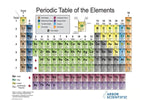
|
Periodic Table of the Elements - Binder Size Item # 65-2010 |
|
|
$3.10 | ||||
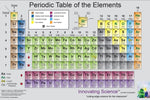
|
Periodic Table of the Elements, Poster Size Item # C5-2015 |
|
|
$17.95 | 10 | $16.90 | ||
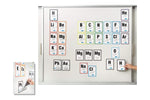
|
Periodic Table Magnetic Cards Item # C5-3000 |
|
|
$25.95 | 6 | $24.40 | ||
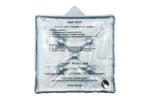
|
Heat Pad - Large Item # P3-1015-03 |
|
|
$18.50 | 10 | $17.20 | ||
